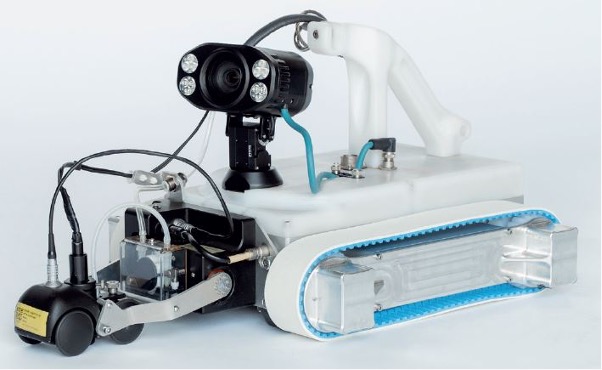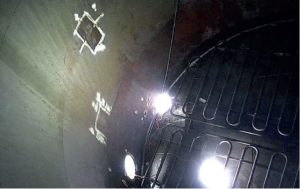Complex Case Study: Utilising Robotic Tech For A Resin Tank With Heating Coil

It’s a common misconception that robotic testing can only be safely carried out in assets with simple geography. Today’s advances mean that nothing could be further from the truth. While the dream of fully autonomous robots is still some years away, the latest technology is more than capable of being tailored to improve the quality of testing, reduce the time it takes and save companies money.
Invert Robotics required a unique setup to overcome just such a complex testing requirement.
The Asset
The asset to be inspected was an insulated 600 m3 carbon steel storage tank that housed a large heating coil at floor level. The layout meant that the erection of scaffolding was impractical, and the company was keen to manage the task without the need for human inspectors to enter the tank. An additional challenge was a thin layer of resin coating the interior walls, meaning traditional magnet-assisted robot adhesion alone wouldn’t be adequate.
The complexities of the vessel made for a highly unusual inspection task. The major international inspection contact holder responsible for ensuring that the testing met regulatory stipulations called upon Invert Robotics to produce a bespoke solution.
The Challenges
In addition to the resin-coated walls, another obstacle was the need to include all the elements of the inspection in a single robot. The results needed to provide close-up visuals of the whole roofing area, a general inspection of the walls and floor, as well as material thickness measurements for a minimum of 2 readings per panel, totalling 120 points across the whole vessel.
The Solution
Invert Robotics were delighted to deploy their H2200 robotic platform – a hybrid robot designed for the most challenging of environments. The first thing to overcome was adhesion. The crawler uses a combination of sliding cup suction technology and supporting magnets. Together, these allowed the robot to easily traverse the walls, even with the resin coating providing a less than perfect surface.
The crawler utilised an impressive payload, it was mounted with an encoded UT probe with a pressurised couplant feed. This enabled all the required UT readings to be acquired, as per the regulatory requirements. This was in addition to the full HD camera @ 30fps and lighting necessary to carry out the visual inspections.
The robotic platform was remotely operated with the real-time data was gathered in less than half a day. The result was a satisfactory recertification with no need for human entry into the vessel.
Contact us to find out more learn more about our robotic systems products or request a quote online.

